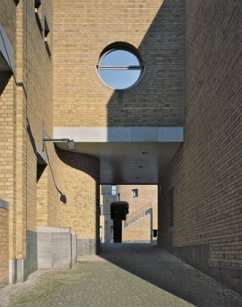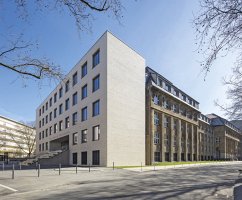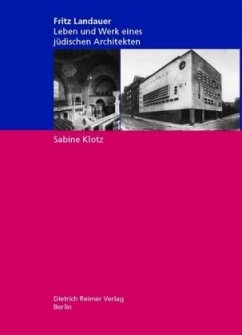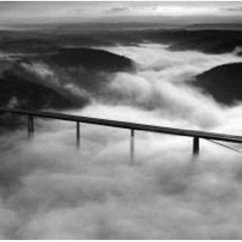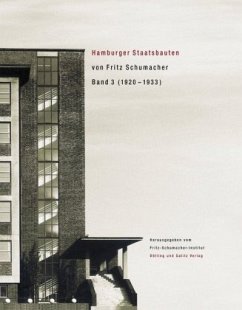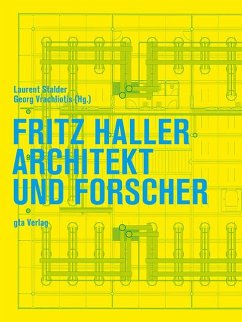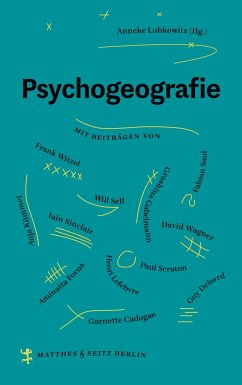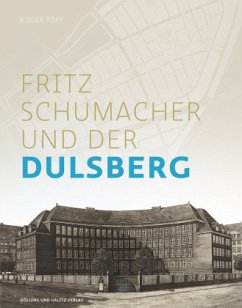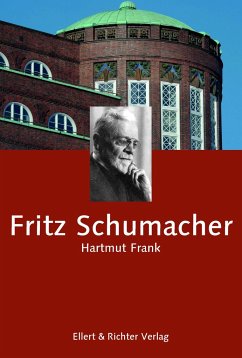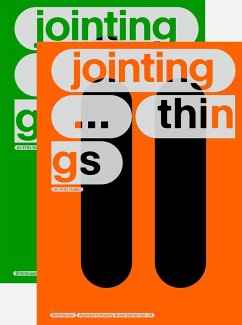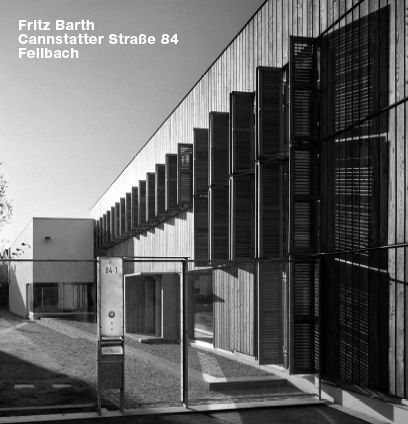
Fritz Barth, Cannstatter Straße 84, Fellbach
Dtsch.-Engl.
Mitarbeit: Schröder, Gerhart; Hettche, Thomas; Sayah, Amber;Fotos: Barth, Fritz
Versandkostenfrei!
Versandfertig in 2-4 Wochen
36,00 €
inkl. MwSt.

PAYBACK Punkte
0 °P sammeln!
Heroic 20th-century Modernism saw the privatehome as a place to first test out utopian theories- a place for free play and experimentationwhere new approaches could be put into action,on a small scale but no less radical. Here, wherearchitecture and life are closely interwoven, FrankLloyd Wright, Gerrit Rietveld, Le Corbusier andKonstantin Melnikov found the suitable space togive their visionary concepts a plastic reality.The house built by Fritz Barth for his own usein his home town of Fellbach places itself in anironic, possibly melancholic distance from thiskind of heroic pathos, but still ...
Heroic 20th-century Modernism saw the privatehome as a place to first test out utopian theories- a place for free play and experimentationwhere new approaches could be put into action,on a small scale but no less radical. Here, wherearchitecture and life are closely interwoven, FrankLloyd Wright, Gerrit Rietveld, Le Corbusier andKonstantin Melnikov found the suitable space togive their visionary concepts a plastic reality.The house built by Fritz Barth for his own usein his home town of Fellbach places itself in anironic, possibly melancholic distance from thiskind of heroic pathos, but still has this tradition asits background. So it is considered by his builderas an experiment to determine the state of architectureat the start of the 21st century - not toapply whatever offers itself to expand the architectonicrepertoire, but to find out what possibilitiesare still open to architecture and how far architecturestill permits a concept of 'dwelling' inthe sense the word was used byHeidegger.The result is not a backward-looking homeliness,but a structure that, as a commitment to architecturein and of itself, stands his ground likefew others in its time and place. This is not leastbecause its complexity its multilayered, opulentfabric of allusions, references and quotations, onlyreveals itself gradually and with close observationbehind a simple appearance targeted on the immediacyof experience and architecture. Despitethe somewhat polemical intentions of its builderand inhabitant, the house is not experienced asan ideological manifesto in bricks and mortar. It isdevoted to the immediate experience of 'dwelling'in so far as it does not allow, as Thomas Hettchewrites in his essay, any distinction between surfaceand function, life and experience.Fritz Barth, born in 1958, studied architecturein Stuttgart. He gained his PhD at the ETH Zürichwith a study of the Villa Lante (Die Villa Lante inBagnaia, Edition Axel Menges, 2001). He has alsowritten a monograph on the late-Baroque Bohemianarchitect Johann Santini Aichel (Santini,2004). Thomas Hettche, born in 1964, is a freelancewriter living in Frankfurt. His most recentpublication was the novel Die Liebe der Väter,published in autumn 2010. Amber Sayah, bornin 1953 in Teheran, is one of the editors of thearts pages of the Stuttgarter Zeitung and the authorof the book Architektur in Vorarlberg. Bautenseit 2000. Until his retirement Gerhart Schröder,born in 1934, was professor of Romance studiesat Stuttgart University. His publications include thework Logos und List. Zur Entwicklung der Ästhetikin der frühen Neuzeit.
Dieser Artikel kann nur an eine deutsche Lieferadresse ausgeliefert werden.



